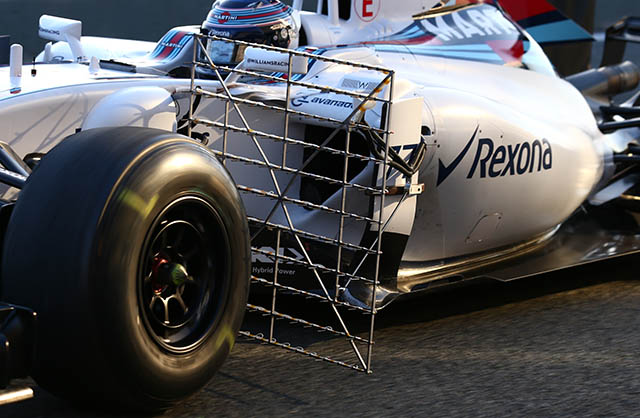
‘The notion for the FW37 was to look closely at the FW36 and its performances,’ says Williams Chief Technical Officer Pat Symonds said in his teams launch press material. ‘We then went about recognising what had worked well and identifying and resolving the areas that we felt needed to be improved. Although the aerodynamics of the car were impressive there is always room for improvement particularly as we handle the new 2015 nose regulations ’
The design of the FW37 has stemmed from the performance of the FW36 but the conceptual ideas came long before the 2014 successes. ‘The first conceptual stage of the FW37 came before the FW36 had turned a wheel. The main element to this is understanding the rule changes and how they will affect the design of the car, from here we can start see if our ideas will fit within the regulations.’
‘The desire to beat Ferrari to third place in the Constructors’ in 2014 meant we pushed our development through to late autumn, but the size of the team is now at a point where it was able to sustain this development whilst still working on the FW37. We felt we came up against design barriers in the FW36 and so took the opportunity to remove those barriers for the benefit of the performance. The FW36 carried a reasonable amount of ballast, so we were able to make alterations to the design for added performance without the fear of adding excessive mass.’
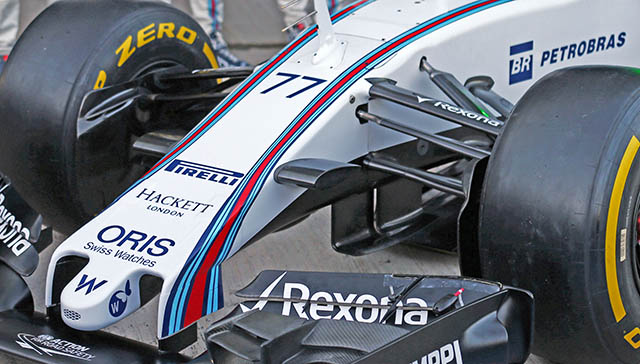
The layout phase of the car was completed by the summer break in August, with work on the new front bulkhead a main priority for the designers and aerodynamicists as the changes to the regulations had their effects on the car. ‘The change in regulations offered us a slight headache. The new front bulkhead and nose geometry had much more of an impact than we had initially anticipated and the effect on the aero was profound. The team have worked hard on pulling back the deficit these regulations have made for us.’
The Williams FW37 was seen for the first time in the pit lane ahead of winter testing at Jerez, Spain.
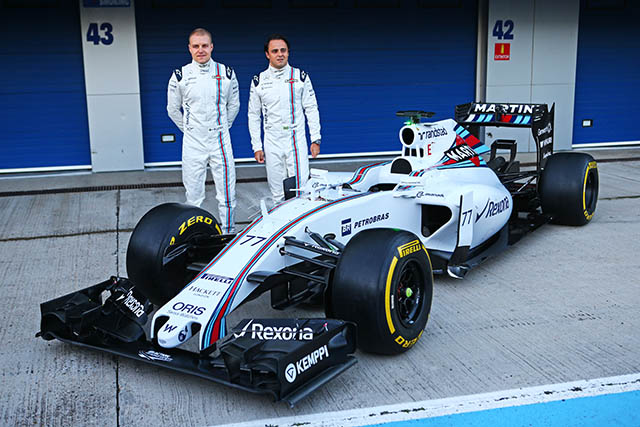
The FW37 roll hoop concept largely carries over from the FW36 with the main duct for combustion air almost identical to the 2014 design. Both cars also feature an additional cooling duct behind the main hoop though the duct on the FW37 is slightly larger.
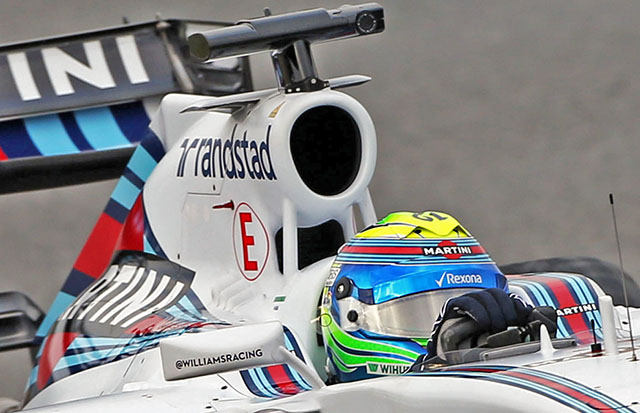
Also note the bulge on the engine cover, which is required due to the larger plenum on the 2015 Mercedes power unit. Note the cooling louvres behind the cockpit sides.
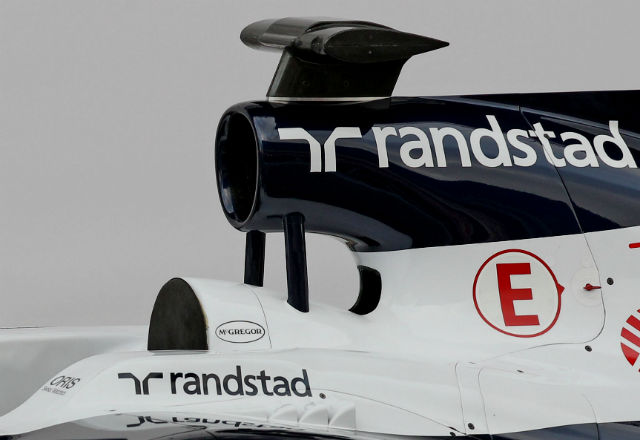
The whole concept dates back at least to the FW35, with the twin forwards support and the overall combustion air intake shape, despite switching from a Renault V8 to two different iterations of Mercedes V6.
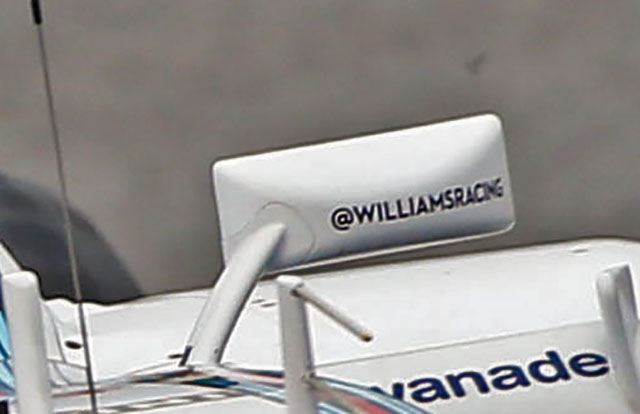
Williams has replaced its interesting box wing mirrors used on the FW36 with a more conventional design.
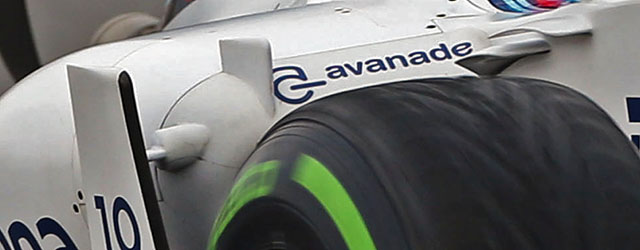
A look at the leading edge of the side pod shows some of the turning vanes in this area. Note the slight protrusion that carries the support for the outer turning vane, it is likely that this is the side impact structure.
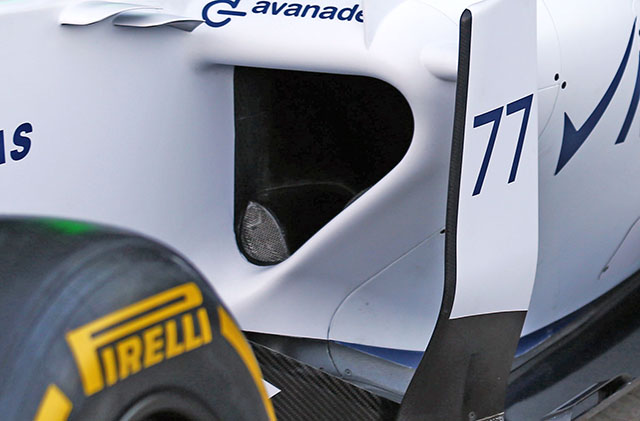
A look at the cooling aperture on the side pod reveals that the left hand side one features a small additional duct at the base of the opening, covered in a gauze. This is likely used to cool some electrical components. This was also a feature of the FW36 (below), which had ducts of similar size and shape.
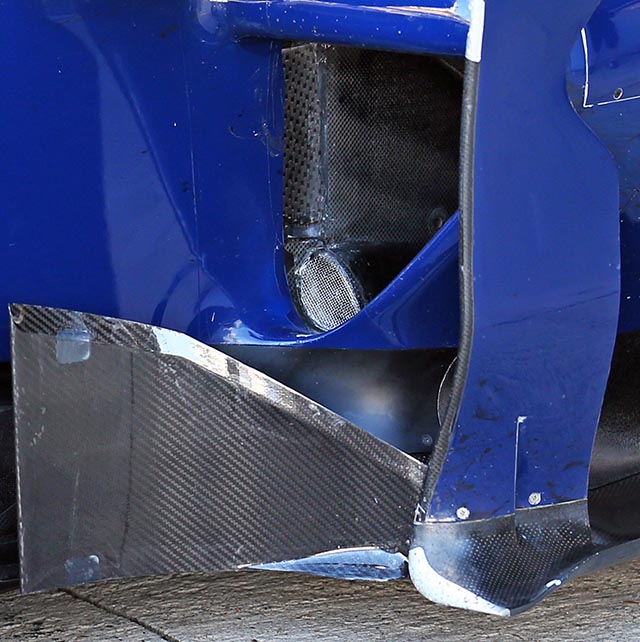
A look at the rear of the FW37 shows the diffuser layout, note the triple deck sections above the main diffuser each side of the crash structure.

The upper wishbone inboard mountings are just below and to either side of the exhaust on the top of the transmission casing.
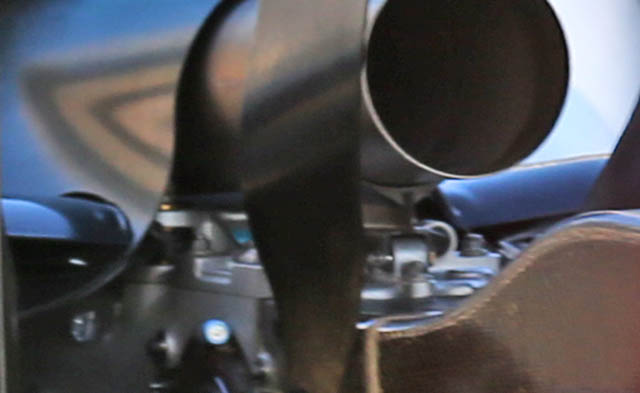
A look at the rear wing of the FW37 reveals immediately that it lacks central supports, and as in other areas the car is largely an evolution of 2014 (indeed it is seemingly identical). A new rear wing is expected for the final pre season test.
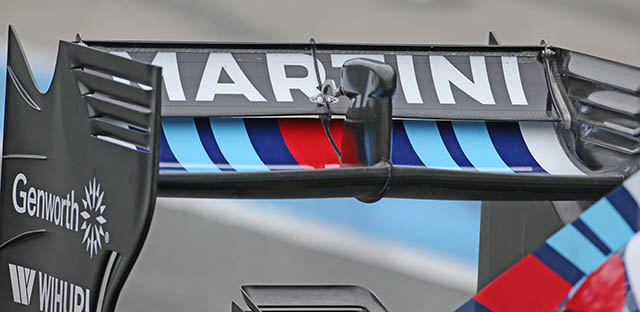
During the Jerez test Williams did a lot of aerodynamic evaluation using sensor arrays such as this very large unit.
